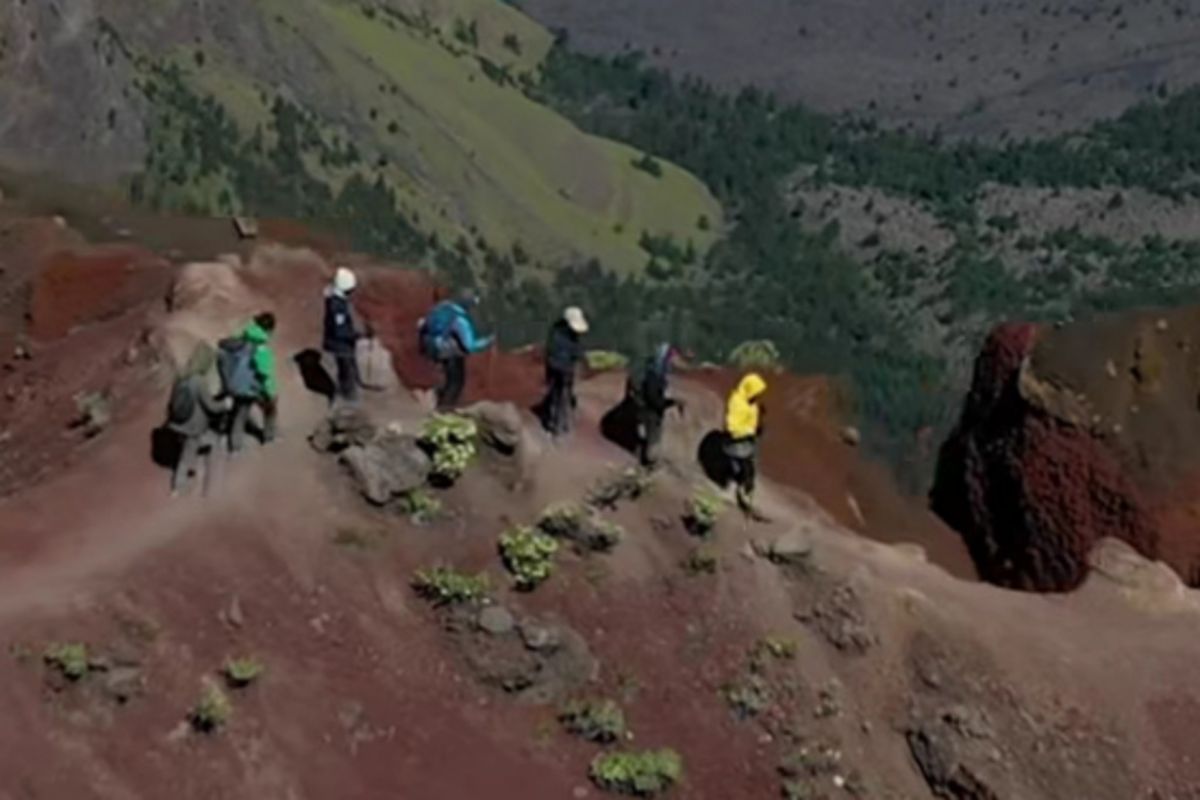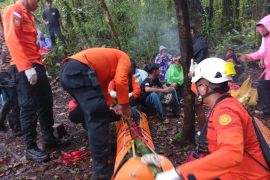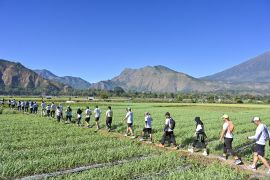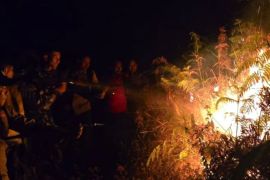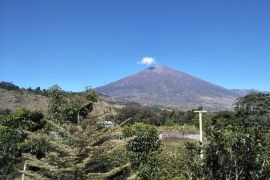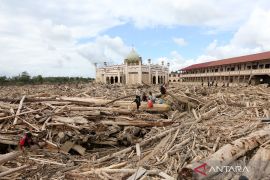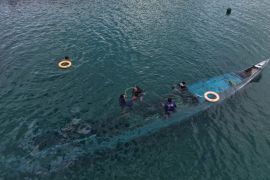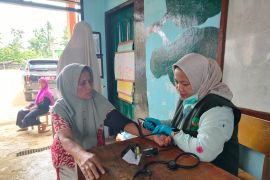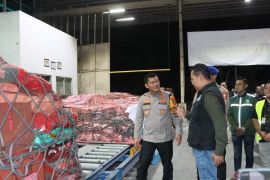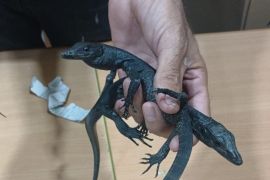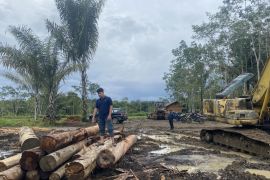Brazilian mountaineer Juliana Marins' death after falling into a 600-meter ravine on the slopes of Mount Rinjani, Lombok, West Nusa Tenggara, underscores the need to improve mount climbing tourism management for greater safety and comfort.
Minister of Forestry Raja Juli Antoni has instructed the Mount Rinjani National Park Office (TNGR) to promptly draft standard work procedures to prevent similar accidents from recurring in Mount Rinjani, the second-highest volcano in Indonesia.
“We should not gamble with people’s lives. We are not collecting PNBP (Non-Tax State Revenue) at the expense of tourists’ safety,” he emphasized.
Mount Rinjani, which stands at 3,726 meters above sea level, is located across the three districts of East Lombok, North Lombok, and Central Lombok. The mountain is currently at level II, or alert status.
The Magma Indonesia page owned by the Geological Agency recorded that seismic activity on Mount Rinjani over the past 90 days has mostly involved distant tectonic earthquakes, local tectonic earthquakes, and deep volcanic earthquakes.
Field observations show that signboards are still limited on Mount Rinjani. Hence, the Forestry Ministry is committed to adding information signs to clearly mark the dangerous red zones, the cautionary yellow zones, and safe green zones accessible to tourists.
The government, in collaboration with the volunteer group "Rinjani Squad," has prepared a special route, in addition to the Sembalun route in East Lombok. This new route is intended as a pilot for international-standard climbing tourism in Indonesia.
Experience required
Mountain climbing is classified as special tourism as it involves challenging and extreme terrain. Climbers are required to prepare both physically and mentally.
The Mount Rinjani National Park Office stated that Mount Rinjani is not suitable for novice climbers. The steep terrain, extreme weather, bone-chilling cold temperatures, long distances, and active volcanoes are only appropriate for experienced climbers.
In the future, entrance checks will not only verify personal data and health documents but will also review climbers' mountain climbing experience.
Visitors who have never climbed a mountain will be directed to attempt another mountain peak or hill instead by the officer.
There are seven well-known peaks in Lombok, known as the Seven Summits: Rinjani Peak at 3,726 meters above sea level, Sempana Peak at 2,329 meters above sea level, Lembah Gedong Peak at 2,200 meters above sea level, Kondo Peak at 1,937 meters above sea level, Anak Dara Peak at 1,923 meters above sea level, Pergasingan Peak at 1,805 meters above sea level, and Bao Ritip Peak at 1,500 meters above sea level.
To ensure the safety and comfort of visitors, as well as encourage alternative destinations, regulations to filter visitors must be enforced. The area management authority, government, and community must collaborate to realize the goal of zero accidents on Mount Rinjani.
The Ministry of Forestry has tailored climbing requirements to the difficulty level of each mountain, considering that Indonesia has more than 400 mountains with varying degrees of difficulty and natural conditions.
Additional emergency posts
During the annual dry season peak from June to August, Mount Rinjani attracts large numbers of tourists, including residents, students, domestic tourists, and foreign travelers.
Climbing activities are a mainstay tourist attraction and make a significant contribution to the country. In 2024, PNBP revenue reached Rp22.5 billion (US$1.3 million), with a multiplier effect on the local economy of around Rp109 billion (US$6.5 million).
The number of climbers totaled 93,796, comprising 46,126 domestic and 47,716 foreign climbers. Meanwhile, 95,295 tourists engaged in non-climbing activities, with 95,222 domestic and 73 foreign tourists.
The main climbing entrances are via the Sembalun route in East Lombok and the Senaru route in North Lombok. There are also four other entrances: Torean, Timbahu, Tete Batu, and Aik Berik.
Currently, there are only two emergency posts or emergency shelters: one at Sembalun Resort at an altitude of 1,158 meters above sea level and another at Post II at an altitude of 1,500 meters above sea level.
The most fatal accidents occur after the Plawangan Post on the way to the summit due to the narrow, steep, and slippery route. Meanwhile, the descent from Plawangan also claims many victims due to falls.
The Ministry of Forestry and the TNGR Center are committed to establishing an emergency post in Plawangan, which is located at an altitude of 2,639 meters above sea level. Plawangan is the last and most popular camping spot before climbing to the peak of Mount Rinjani.
An emergency post closer to the peak can help facilitate the mobilization of evacuation officers and equipment. Various search and rescue equipment, such as ropes, pulleys, body-warming device, and drones, must be available at the emergency post.
Expertise certification
The government is working to ensure that tour guides in the Mount Rinjani area are certified. Of the 621 tour guides in the area, only 321 people currently have certification.
Based on the Ministry of Manpower regulations, tour guides are required to have expertise certification. The certification aims to ensure their technical competence, professional ethics, and environmental responsibility according to national standards.
The West Nusa Tenggara Provincial Government, which is currently developing a quality tourism concept, is committed to supporting tour guide certification.
Head of the NTB Tourism Office, Lalu Ahmad Nur Aulia, emphasized that quality tourism must be packaged inclusively to deliver a satisfying experience for travelers visiting tourist attractions in West Nusa Tenggara.
In addition to tour guide certification, 12 individuals will undergo an international-standard rescue certification program in Bandung, West Java, including Agam Rinjani, the man who recovered Juliana Marins' body from a 600-meter deep ravine.
After participating in the rescue certification program, they will be assigned to conduct the training of trainers for tour guides and porters on Mount Rinjani.
These various improvements are a manifestation of the government’s attention to the safety and comfort of climbing as a form of special tourism. The improvements at Mount Rinjani are expected to be replicated across other mountains in Indonesia to prevent future fatalities.
Related news: Presidents Prabowo, Lula may discuss Marins' case during Brazil visit
Related news: Rinjani tragedy shouldn't strain Indonesia-Brazil ties, says minister
Related news: Indonesia’s DPR Speaker urges tourist safety after Mt. Rinjani death
Translator: Sugiharto Purnama, Resinta Sulistiyandari
Editor: Azis Kurmala
Copyright © ANTARA 2025
